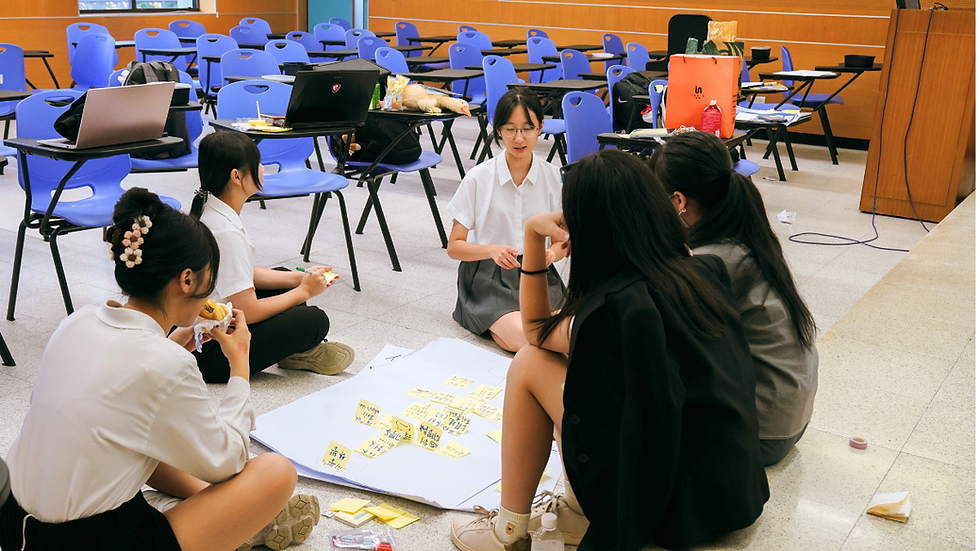From not understanding to being willing to understand, how does critical thinking education quietly transform individuals and society?
- Lead For Taiwan
- Jul 9
- 2 min read
Updated: Jul 16
Caiying Chen / 7th Cohort Trained Instructor
Research Topic: Appearance Anxiety

Exploring More Possibilities Through Innovative Education
Caiying Chen is a student in the Finance Department at National Taiwan University. One day, she happened to come across Lead For Taiwan’s critical thinking education program on Instagram, sparking her curiosity about innovative education. She recalled a micro-course she took in high school — a social innovation class — where she and her classmates designed a role-playing game (RPG) simulating the challenges homeless people face when seeking jobs. Through this game, they made society’s stereotypes about the homeless and the real difficulties they encounter more tangible, allowing participants to develop a deeper empathy for their situation. This experience made Caiying realize that innovative education can bring people closer to social issues.
When she learned about Lead For Taiwan’s critical thinking education, a new idea emerged: “Could we use game-based learning to introduce complex issues to students?”
The Difference Between Idealism and Reality

However, there is a significant gap between ideals and reality. Caiying found that while some students attending the course were genuinely interested in critical thinking education, many others participated for various reasons and were not particularly enthusiastic about the topics or the thinking process.
“I feel like those who have appearance anxiety don’t really know what they’re anxious about. When I came out of it, it seemed very simple to me. I still don’t understand what they’re struggling with,” said one student during the course.
Caiying gradually realized that facing such a diverse group of students, a single teaching method was not enough. She needed more patience, acceptance, and empathy — like an elementary school teacher gently guiding students to think. She began to adjust her lesson plans, no longer measuring students by her own standards, but understanding that everyone has different perspectives and experiences.
Without understanding the essence of things, it’s easy to make judgments based solely on one’s own experience — and this is exactly why we promote critical thinking education.
回到最初的感動

On the last day of the course, a student quietly approached Caiying and said, “I really want others to understand appearance anxiety and to know what those people are truly thinking.” This heartfelt remark deeply moved Caiying.
This student gradually transformed from initially not understanding appearance anxiety to wanting to understand it and help others gain that understanding as well.
She said this reminded her of when she designed the RPG game years ago, and after experiencing both as a student and a teacher, she felt deeply moved by the understanding gained about the homeless.
訪談 & 撰文 / 徐永鴻


